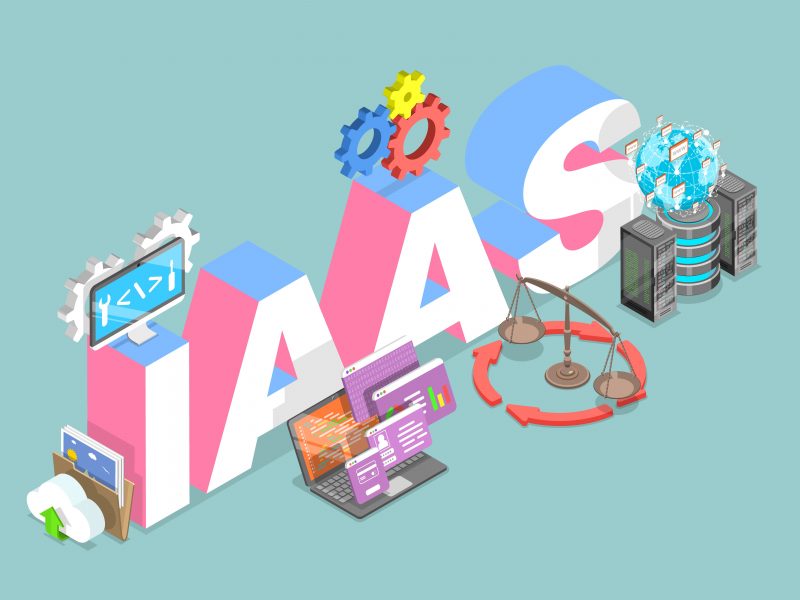Introduction to Platform as a Service (PaaS)
In today’s fast-paced and ever-evolving digital landscape, businesses must stay agile and innovative to thrive. One key factor that can significantly impact a company’s success is its ability to bring new ideas and products to market quickly. This is where Platform as a Service (PaaS) comes into play.
PaaS is an essential component of cloud computing that offers developers and businesses a streamlined way to develop, deploy, and manage applications without the hassle of building and maintaining the underlying infrastructure. With PaaS, companies can focus on what truly matters – their ideas – while leaving the technical complexities behind.
What is Platform as a Service (PaaS)?
Platform as a Service (PaaS) is a cloud computing model that provides businesses with a platform to develop, run, and manage their applications without infrastructure management. It offers tools and services needed to build, deploy, and scale applications quickly and efficiently.
With PaaS, businesses can focus on developing innovative ideas rather than worrying about the underlying infrastructure. This allows companies to save time and resources in setting up servers, databases, networking components, etc., as the PaaS provider manages all these.
PaaS offers several advantages over traditional application development methods. It promotes collaboration among developers by providing them with a shared environment where they can work together on projects seamlessly. Additionally, it enables faster deployment of applications through automatic scaling capabilities.
Advantages of using PaaS
When it comes to developing and deploying applications, businesses are always on the lookout for ways to streamline their processes and bring their ideas to market faster. This is where Platform as a Service (PaaS) comes into play. PaaS offers numerous advantages that can help companies achieve faster time to market.
One of the key advantages of using PaaS is its scalability. With traditional infrastructure, scaling up or down can be time-consuming and resource-intensive. However, with PaaS, businesses can quickly scale their applications based on demand without worrying about managing hardware or infrastructure.
Choosing PaaS for Faster Time to Market
Companies today are constantly seeking ways to get their products and services to market faster. One solution that has gained popularity in recent years is Platform as a Service (PaaS). By leveraging PaaS, businesses can streamline their development process and significantly reduce time to market.
There are several reasons why companies choose PaaS for faster time to market. It provides a ready-made infrastructure that eliminates the need for organizations to build and maintain their own hardware and software systems. This allows them to focus solely on developing their applications or services, saving valuable time and resources.
PaaS platforms offer built-in scalability features that enable businesses to handle increased demand as they grow easily. With the ability to quickly scale up or down depending on customer needs, companies can avoid costly delays associated with infrastructure setup or upgrades.
Reasons why companies choose PaaS
Companies increasingly turn to Platform as a Service (PaaS) for their application development and deployment needs. PaaS offers several key advantages that make it an attractive option for organizations of all sizes. Here are some reasons why companies choose PaaS:
1. Cost savings: One of the main reasons companies opt for PaaS is the potential cost savings it provides. With PaaS, businesses don’t need to invest in expensive hardware or infrastructure, as everything is hosted and managed by the service provider. This eliminates the need for upfront capital expenditure and allows companies to pay only for the resources they use.
2. Scalability and flexibility: Another significant advantage of PaaS is its scalability and flexibility. Companies can easily scale their applications up or down depending on demand without worrying about managing servers or infrastructure. This enables them to quickly respond to changing market conditions, ensuring their applications handle increased user traffic without downtime.
3. Faster time to market: Time is a critical factor in today’s fast-paced business environment, and companies understand the importance of getting their products or services out into the market quickly. PaaS allows businesses to accelerate their development cycles by providing pre-built frameworks, libraries, and tools that streamline application development processes.
4. Focus on core competencies: By offloading infrastructure management tasks to a third-party provider through PaaS, companies can focus more on what they do best – developing innovative solutions and delivering value-added services to their customers.
How PaaS enables faster time to market
Platform as a Service (PaaS) is gaining popularity among businesses looking to speed up their time to market. But how exactly does PaaS enable faster time to market? Let’s take a closer look.
PaaS simplifies the development process by providing pre-configured infrastructure and tools for building and deploying applications. This means developers can focus on writing code rather than managing complex infrastructure setups. With fewer obstacles, they can bring new ideas to life more quickly.
PaaS offers scalability and flexibility. As your business grows, you don’t have to worry about provisioning additional resources or dealing with infrastructure limitations – it’s all taken care of by the PaaS provider. This allows you to quickly scale your application based on demand and adapt to changing market needs without delays.
Understanding the Types of PaaS
Platform as a Service (PaaS) is a versatile cloud computing model that offers developers an environment to build and deploy their applications quickly and efficiently. But did you know that there are different types of PaaS? Let’s explore them further.
1. Public, private, and hybrid PaaS: These three types differ in who manages the underlying infrastructure. Public PaaS is collected by third-party providers and accessible over the Internet. Private PaaS is hosted within an organization’s data centre or private cloud, providing additional security and control. Hybrid PaaS combines elements of both public and private models to offer greater flexibility.
2. Communications platform as a service (CPaaS): CPaaS provides tools for integrating real-time communication features into applications such as voice calls, video conferencing, messaging, and more. It enables businesses to enhance customer engagement through seamless communication channels.
3. Mobile Platform as a service (MPaaS): MPaas focuses on mobile application development by providing specific tools like software development kits (SDKs), app testing frameworks, backend services for data storage, push notifications, etc., allowing developers to create high-quality mobile apps without having to worry about infrastructure management.
4. Key features and benefits of PaaS platforms: Besides these specific types of PaaS offerings mentioned above, key features include scalability, reliability, and ease of use.
Public, private, and hybrid PaaS
Public, private, and hybrid PaaS are the different types of Platform as a Service (PaaS) options available for businesses. Each class offers unique benefits and features to cater to specific needs.
1. Public PaaS: This type of PaaS is hosted in the cloud by a third-party provider and is accessible over the Internet by multiple users or organizations. It offers scalability, flexibility, and cost-effectiveness, as businesses can pay for only the resources they use. Public PaaS eliminates the need for companies to manage infrastructure and allows them to focus on developing their applications.
2. Private PaaS: Unlike public PaaS, private PaaS is designed for exclusive use within an organization or specified group of users. It provides enhanced security measures that meet compliance requirements while offering scalability and customization options based on business needs.
3. Hybrid PaaS: As the name suggests, hybrid PaaS combines elements of both public and private platforms. Companies can leverage their on-premises infrastructure and services from a public cloud provider according to their workload demands or data sensitivity requirements.
Communications platform as a service (CPaaS)
Communications Platform as a Service (CPaaS) is an essential component of cloud computing that enables businesses to integrate real-time communication features into their applications. With CPaaS, companies can easily add voice, video, messaging, and other communication functionalities to their existing systems without complex infrastructure or extensive development efforts.
One key advantage of CPaaS is its ease of use. Developers can leverage APIs and SDKs provided by CPaaS providers to integrate communication capabilities into their applications quickly. This eliminates the need for building these functionalities from scratch, saving time and resources.
Mobile Platform as a service (MPaaS)
Mobile Platform as a Service (MPaaS) is a type of Platform as a Service (PaaS) specifically designed to support mobile application development and deployment. With the increasing demand for mobile apps, MPaaS has become an essential tool for businesses looking to streamline their mobile app development process.
One key benefit of using MPaaS is the ease of use it provides for developers. It offers pre-built components and tools that simplify the app development process, allowing developers to focus on creating unique features rather than spending time on tedious coding tasks.
Another advantage of MPaaS is its ability to seamlessly integrate with other cloud services and APIs, enabling developers to leverage existing resources and functionalities without starting from scratch. This not only saves time but also ensures compatibility across different platforms and devices.
Key features and benefits of PaaS platforms
PaaS (Platform as a Service) offers a range of critical features and benefits that businesses can leverage to accelerate their development process. One of the main advantages is the ability to deploy applications without complex infrastructure setups easily. With PaaS, developers can focus on writing code rather than managing servers or configuring networks.
Another important feature is scalability. PaaS platforms provide automatic scaling capabilities, allowing applications to handle increased traffic without manual intervention. This ensures that your application remains responsive even during peak demand periods.
PaaS also promotes team collaboration by providing centralized tools and resources for development, testing, and deployment. Developers from different locations can work together seamlessly by accessing a common platform. This streamlines communication and improves overall productivity.
Make the Switch to PaaS with HPE
Are you ready to switch to Platform as a Service (PaaS)? Look no further than Hewlett-Packard Enterprise (HPE) for all your PaaS needs. With HPE, transitioning to PaaS has never been more effortless or seamless.
HPE offers a comprehensive suite of PaaS solutions that can help accelerate your time to market and streamline your development processes. Their PaaS platform provides all the tools and infrastructure you need to build, deploy, and manage applications in the cloud. Whether you’re looking for a public, private, or hybrid solution, HPE covers you.
One of the key advantages of choosing HPE for your PaaS needs is their extensive experience in cloud computing. They have been at the forefront of innovation for years and understand what it takes to succeed in today’s fast-paced digital world.
How HPE can help with transitioning to PaaS
Transitioning to Platform as a Service (PaaS) can be a game-changer for businesses looking to accelerate their time to market. However, making the switch can be daunting without the proper guidance and support. This is where Hewlett Packard Enterprise (HPE) comes in.
1. Expertise and Guidance: HPE has years of experience in cloud computing and PaaS solutions. Their team of experts understands the ins and outs of transitioning from traditional infrastructure to a PaaS environment. They provide comprehensive guidance throughout the entire process, from selecting the right PaaS platform to migrating your applications seamlessly.
2. Tailored Solutions: HPE understands that every business has unique requirements. That’s why they offer tailored solutions based on your specific needs. Whether you need a public, private, or hybrid PaaS solution, HPE will work closely with you to design an architecture that aligns with your goals and objectives.
3. Seamless Integration: One of the biggest challenges when transitioning to PaaS is integrating existing systems smoothly into the new environment. HPE ensures seamless integration by leveraging its expertise in application modernization and containerization techniques. This allows for a smooth transition without disruption to ongoing operations.
4. Cost Optimization: Moving to PaaS can also bring cost savings by eliminating capital expenditures on hardware infrastructure and reducing operational expenses associated with maintenance and upgrades.
HPE helps optimize costs by providing flexible pricing models based on usage patterns, ensuring you only pay for what you need.
Conclusion
In today’s competitive business landscape, Platform as a Service (PaaS) is a game-changer. It streamlines application development by providing pre-built tools, allowing for faster innovation. PaaS’s flexibility and scalability help companies adapt quickly to market changes, accelerating product and service delivery. By choosing the right PaaS platform tailored to specific needs, companies can enhance their time-to-market capabilities. HPE offers expert support for a smooth transition to PaaS, from planning to deployment and ongoing management.


